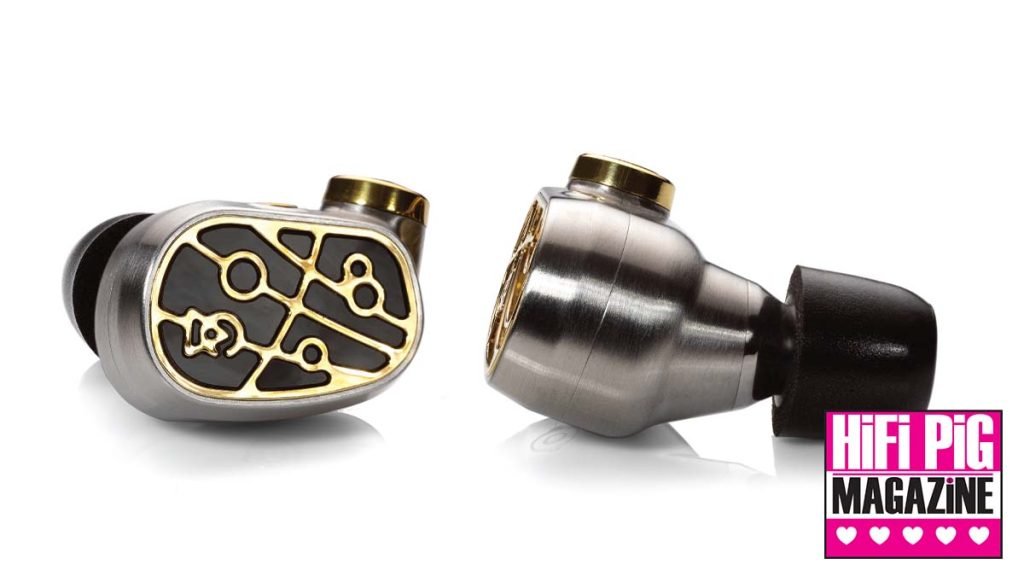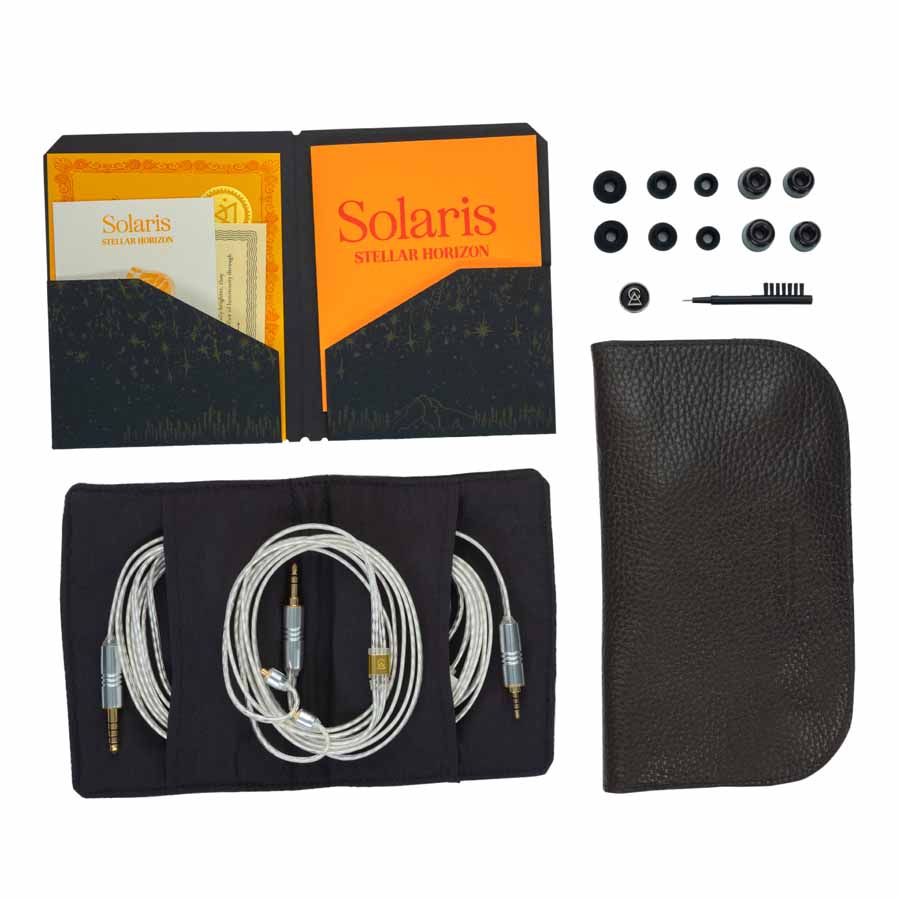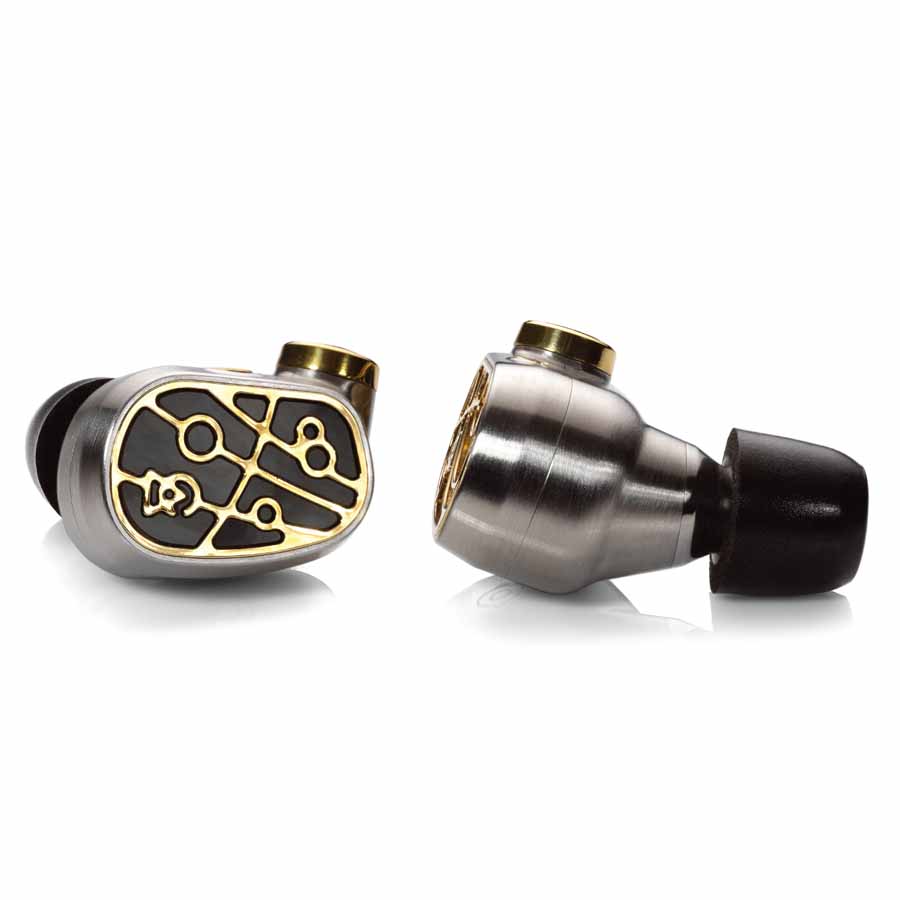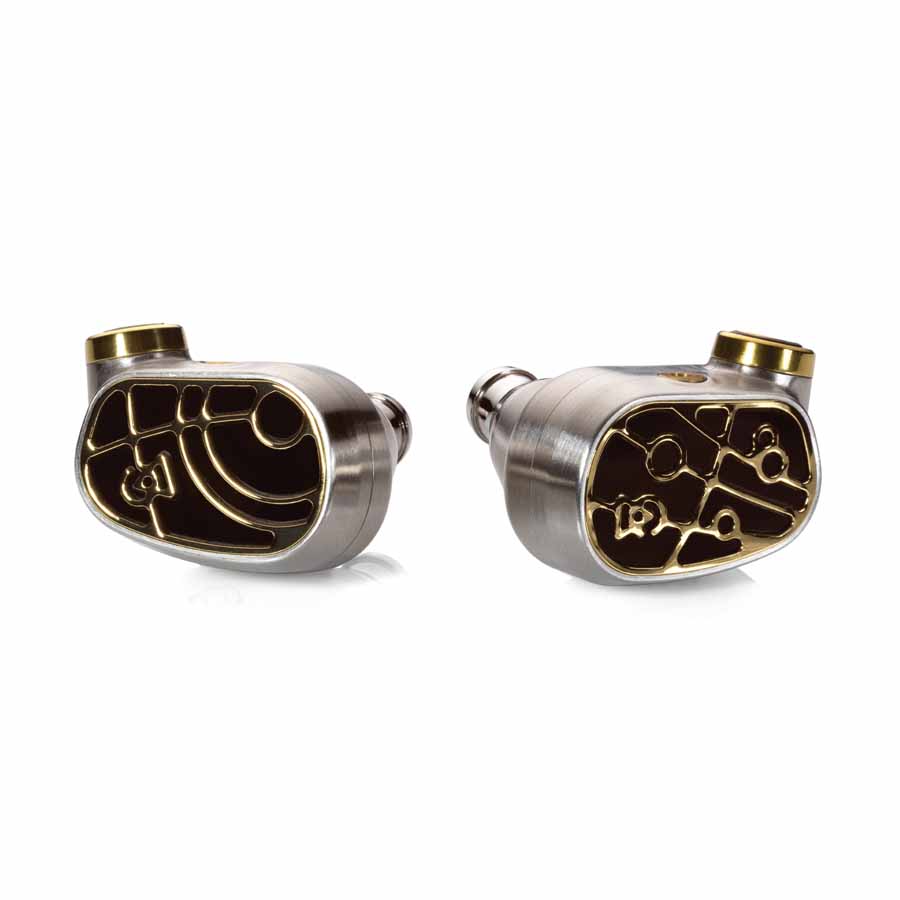CAMPFIRE AUDIO SOLARIS STELLAR HORIZON IEM REVIEW
The Campfire Audio Solaris Stellar Horizon are an expensive in-ear monitor that promises a great deal sonically and is presented in a suitably luxurious package. But how do they perform in the real world?
When you are sent a Campfire IEM and you know you’re about to be amazed by its looks and performance. The Solaris “Stellar Horizon” comes at the top end of their large range of IEMs, all looking as amazing as those produced by Final, Noble Audio, Unique Melody, etc. They all look too good to be placed in the ear and look like jewelry, but looks are one thing, so would the Solaris Stellar Horizon IEMs sound 24-carat gold just like its appearance?
The Oregon-based company comprises 13 team members. Formed in 2015 they have been pushing the boundaries of housings and sound to make them more ergonomic, durable, and striking in looks. Even the paperwork is all done in-house, and the Solaris comes complete with a wooden box to store the beautiful-looking product. This isn’t the first Solaris to appear, but this new replacement “Stellar Horizon” version is definitely the better looking and adds another £1100 to the price of the original.
Coming in at £2669 I put them to the test.

The packaging on these headphones is excellent – as it should be given their price
BUILD AND FEATURES OF THE CAMPFIRE SOLARIS STELLAR HORIZON
On opening the beautiful wooden box I was immediately impressed with the detail; a choice of three “marshmallow” and 3 silicon ear-tips, unbalanced 3.5mm plus balanced 4.4mm and 2.5mm silver plated Litz flat cables, Campfire Audio pin badge, a leather magnetic closing bag for the earphone, a smaller earphone bag to put the earbuds in for extra safety, a magnetic closing cable pouch for the other cables, some cleaning tools and a miniature plastic model of a hand which I still can’t work out what it’s for.
The IEM body has a brushed stainless-steel housing with brass accents, meaning that it is fairly heavy in the ears, so it is essential you use the correct ear-tips to keep them in your ears.
Inside there are 4 drivers; three custom Dual-Diaphragm balanced armatures – two high and one mid – plus a 10mm ADLC dynamic driver with radial venting.
The visible end once in your ears has beautiful art deco custom PVD gold accents in laser-cut acrylic giving it the look of sophistication.
The unit comes with an instruction book written in red ink on orange paper (why do people think this is a good idea? It is hard to read unless you’re standing under a strong light!) What is nice is the certificate of ownership card just to make it feel even more special.
SOUND OF THE STELLAR HORIZON IEMs
The importance of fitting the correct eartips was apparent right from the start; having put the Solaris in my ear with the attached eartips gave a bass-less and predominately mid-frequency sound. Nothing to write home about until I actually changed the ear-tip so that it provided a proper seal around my ears to allow a better bass end (down to 5Hz apparently) and a flat frequency range all the way up. A tip; always try all the provided ear tips until you get the best sound! This was particularly important with the Solaris; very they are heavy and so you need to make sure the ear-tip will hold it in your ears!
I started the listening session with an old favourite. I’m partial to John Barry’s 4-CD compilation of all his famous film music, and I was promptly whisked away to musical heaven. This IEM provided a tidier bass and a detailed and fast midrange. Campfire only states it going as high as 20kHz, but the top end was extremely extended and clear. Only an odd few times listening to music did I feel the sound could be a little bit “digital”. The soundstage was excellent, as was the flat frequency bandwidth showing the tuning of the four drivers to be exceptionally good.
Turning to “Almost Like Being in Love” (Joe Stilgoe, ‘Songs on Film’, 24/192 Linn) gave an exceptional amount of detail and a wide soundstage from this live performance. The double bass was extremely agile and the cymbals were tight and extended in frequency, possibly the best I have ever heard on IEMs/headphones. Clarity was something this IEM excelled in; even the distorted guitars in “Old Greenwich Time” (Maeve O’Boyle ‘All My Sins’, Linn 24/192) just worked so controlled and transparent and almost beautiful, but certainly, once the synths and guitar supported the vocals everything was perfectly proportioned and timed. Indeed, the Stellar Horizon gave excellent separation of the instruments, making it easy to follow this piece, and indeed any other work I played.
So, too, with Louis Armstrong’s “All the Time in the World” (24/96). This dated and iconic recording was tastefully and professionally performed by the Campfire.

Janine found it important to get the correct eartip with these heavy IEMs
“A Trace of Grace” (Michael Godhard and friends, DSD 11.2MHz) is a very open recording with guitars, followed midway with violin, brass, and sax to add weight. Listening to music is often confusing; we can want detail and openness of sound from solid-state amps but also musicality that comes from valves, and it can mean we have to sacrifice one for the other. Here the music is transparent, fast, and detailed, but still has that musicality that we really need to make the music pleasurable. Only on a few occasions, I felt the Campfire just lost a minute speck of the musicality. But, would that put me off buying the IEMs? No way. These are easily worth the £2699 asking price, not just build quality and accessories, but also the epic performance.
Next to The Kinks “Misfits” (24/96). This track had excellent decay of the cymbals and tom-toms. The Solaris Stellar Horizon was equally good with quiet verses as it was with the powerful chorus. Bass was fluid and tops were precise. That agility with powerful sections was tested further in Nirvana’s “Smells Like a Teen Spirit”. Here the powerful distorted guitars and drums were so well controlled that I started to enjoy this album for the first time.

These are certainly ear-jewels with a sound to match
I wondered just how honest compressed MP3 tracks would sound, so tried several including Dream Theatre’s “Repentance” and Mahler’s iconic 8th Symphony complete with choir. I needn’t have worried. The A&K SE180 DAP and the Campfire just worked so well together that the music flowed with clarity and detail giving little clues that this was indeed a compressed file. Vocals were fluid and instruments were carefully constructed to complete the sound painting. Only the occasional drum sounded a bit brash. Again with classics, Antal Dorati and the London Symphony Orchestra playing Beethoven’s ‘Wellington Victory’ was surprisingly good considering this work is his equivalent to Tchaikovsky’s later ‘1812 Overture’, complete with canons and shotguns. But this really doesn’t work on MP3, whatever IEM you might be using! The quiet sections were great, as were the triangle rattles, but the loud drums and brass followed by the canons and rifles at 03’50” just made the piece as hard for me to listen to as it would have taken them to record in the studio. The Campfire did its best and for that I am grateful. Playing the Sibelius Symphonies (Simon Rattle, DG 24/192) was much fairer on the Solaris, let alone my ears. This was very good, concluding my belief that this was indeed a superb IEM.
CONCLUSION
The Stellar Horizon gave me a chance to sit back and listen to music of all genres with equal enjoyment and excitement.
This is a stellar product with excellent detail, authority, and sensitivity. It just did things brilliantly. If it could be very slightly more musical on occasion, I would say this is the best IEM I have ever listened to.
If you are in the market for a really excellent IEM (and remember this isn’t even the top model in the Campfire portfolio) then you should definitely give the Solaris Stellar Horizon a listen.
AT A GLANCE 
Build Quality:
Excellent design and build
Sound Quality:
An exciting and transparent performance, with masses of detail and an excellent soundstage
Value For Money:
£2669 is a lot of money but the sound quality is worth every penny
We Loved:
Transparency
Speed of performance
Bass extension
Excellent soundstage
Lowest distortion
Excellent accessories and product design
We Didn’t Love So Much:
Just wish I could afford them!
Elevator Pitch Review: I’d expect a stellar performance from an IEM called Stellar Horizon, and I wasn’t to be disappointed. This really was the best I have heard to date. Transparency, detail, and frequency response were all excellent, as I’d expect at this price. It even looked great, though its Stainless-Steel build made them rather heavy on my ears as well as my pocket – they come in at £2699.
Price: £2669

Janine Elliot
SPECIFICATIONS
5Hz–20 kHz Frequency Response
94 dB SPL @ 1kHz: 9.145 mVrms
4.40 Ohms @ 1kHz Impedance
Less than 0.5% Total Harmonic Distortion
Brushed Stainless Steel Housing With Brass Accents and PVD Gold Custom Inlay
Two New Custom Dual-Diaphragm Balanced Armature Drivers + T.A.E.C. (High)
Single New Custom Dual-Diaphragm Balanced Armature Driver (Mid)
Custom Full-Range 10mm ADLC Dynamic Driver
Beryllium / Copper MMCX Connections
Stainless Steel Spout





















































































































































































